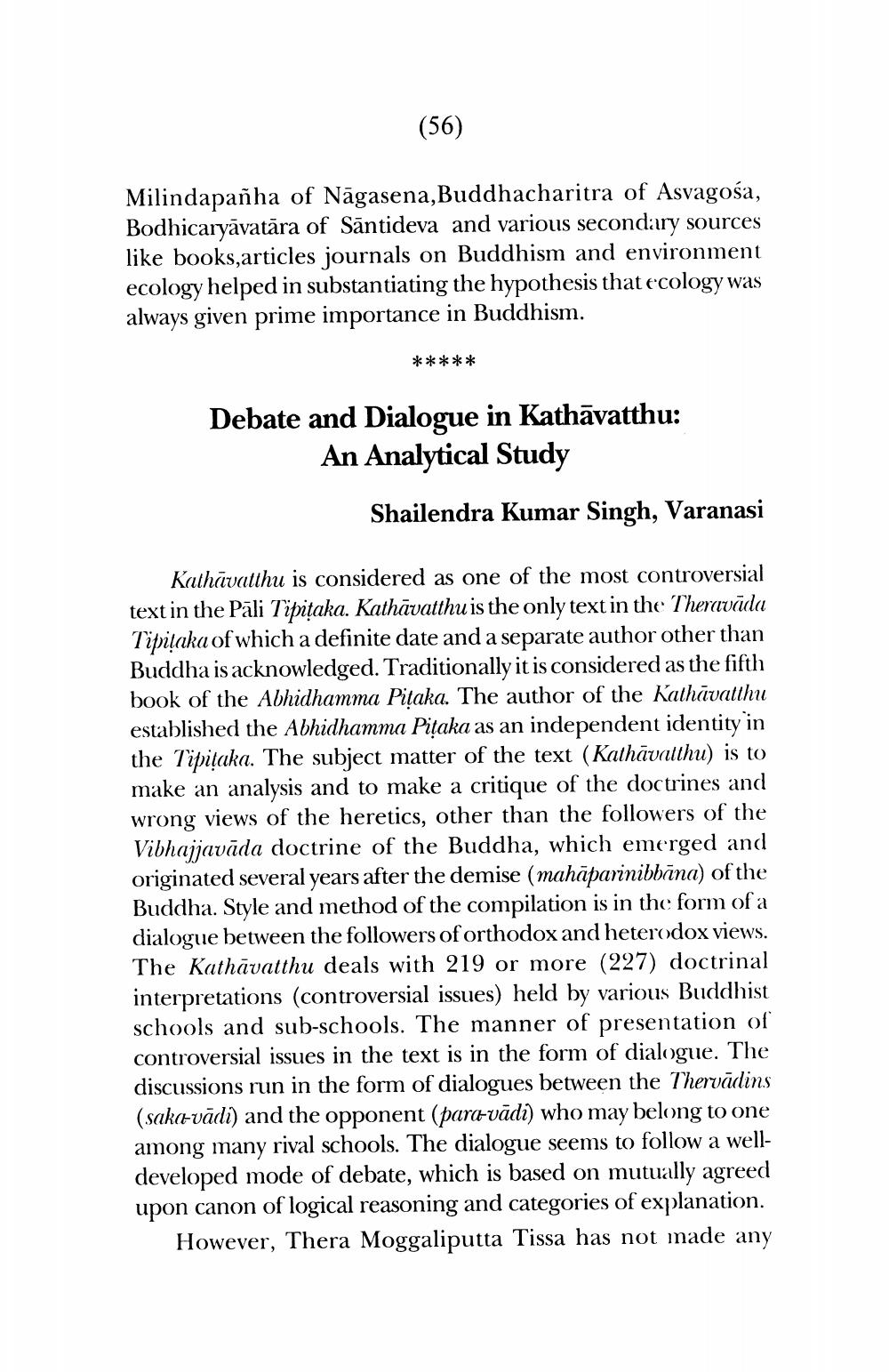________________
(56)
Milindapañha of Nāgasena,Buddhacharitra of Asvagosa, Bodhicaryāvatāra of Sāntideva and various secondary sources like books,articles journals on Buddhism and environment ecology helped in substantiating the hypothesis that ecology was always given prime importance in Buddhism.
*****
Debate and Dialogue in Kathāvatthu:
An Analytical Study
Shailendra Kumar Singh, Varanasi
Kathāvatihu is considered as one of the most controversial text in the Pāli Tipitaka. Kathāvatthu is the only text in the Theravāda Tipitaka of which a definite date and a separate author other than Buddha is acknowledged. Traditionally it is considered as the fifth book of the Abhidhamma Pitaka. The author of the Kathāvatthu established the Abhidhamma Pitaka as an independent identity in the Tipitaka. The subject matter of the text (Kathāvalthu) is to make an analysis and to make a critique of the doctrines and wrong views of the heretics, other than the followers of the Vibhajjavāda doctrine of the Buddha, which emerged and originated several years after the demise (mahāparinibbāna) of the Buddha. Style and method of the compilation is in the form of a dialogue between the followers of orthodox and heterodox views. The Kathāvatthu deals with 219 or more (227) doctrinal interpretations (controversial issues) held by various Buddhist schools and sub-schools. The manner of presentation of controversial issues in the text is in the form of dialogue. The discussions run in the form of dialogues between the Thervādins (saka-vādi) and the opponent (paravādi) who may belong to one among many rival schools. The dialogue seems to follow a welldeveloped mode of debate, which is based on mutually agreed upon canon of logical reasoning and categories of explanation.
However, Thera Moggaliputta Tissa has not made any




